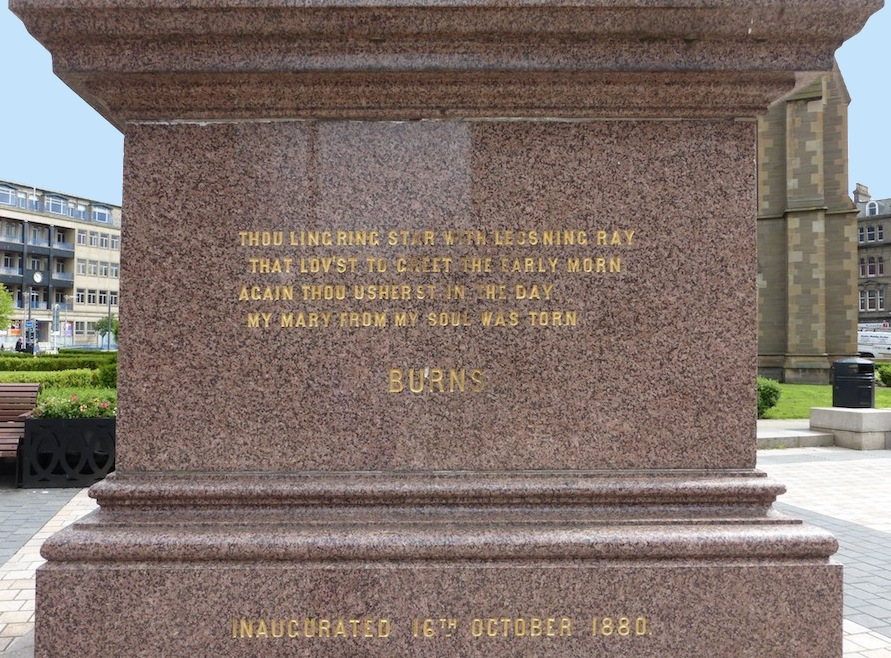

Robert Burns, Dundee, by Sir John Steell (1804-91). 1880. Bronze on a polished Peterhead red granite plinth, with a gold-lettered inscription. The seated statue itself is 3.66m. high (Gifford 114). The statue is located in Albert Square, in front of the west entrance to the McManus Dundee's Art Gallery and Museum. [Click on all the images for larger pictures.]


Burns only visited Dundee once, but the much-loved Scottish poet was memorialised by statues in various places in Scotland and abroad: this statue was preceded by ones in Glasgow (1877) and Kilmarnock (1879), and Christopher Whately suggests that there was an element of civic rivalry involved in erecting it (3). In fact, the model here was one that Steell had already designed for Central Park, New York, a factor that lowered the price somewhat, although it still cost £1,700 (Whately 5). The unveiling was a grand affair, with as many as 40,000 spectators in the square, and many outside it too, in the decorated streets. However, the work met with criticism as well as praise, for example, Steell was felt to have made him look hunchbacked (Whately 12).


Left: The inscription on the plinth. Right: Steel's signature at the base of the statue.
The inscription is the opening verse from "To Mary in Heaven" (1789), which runs:
Thou ling'ring star, with lessening ray, That lov'st to greet the early morn, Again thou usher'st in the day My Mary from my soul was torn.
The statue itself was inspired by the idea in the poem, that Burns was looking skywards in thoughts of his lost love, Highland Mary (Mary Campbell). More lines from the poem can be seen inscribed on the scroll at Burns's feet. Whately writes, "It is questionable how far the statue represents the Burns the statue committee in Dundee wished to commemorate — although there is no doubting the hold of the Highland Mary narrative on the Victorians' imagination" (11).
Steell used the same model for his London statue of 1884 (see Read 349), but, either because he took his critics into account, or because he was reluctant to produce an exact replica, there are certain differences. In particular, "Burns's back is straighter and his head looks directly ahead rather than upwards" (Whatley 12); Brian King, who notes that the Embankment unveiling was less elaborate than the one in Dundee, calls the London statue a "slightly modified version of Steell's original design" (199). It certainly looks less contorted.
Related Material
Photograph s by the author. You may use these images without prior permission for any scholarly or educational purpose as long as you (1) credit the photographer and (2) link your document to this URL in a web document or cite the Victorian Web in a print one.
Bibliography
Gifford, John. Dundee and Angus. The Buildings of Scotland series. New York and London: Yale University Press, 2012.
King, Brian. Undiscovered Dundee. Edinburgh: Black & White Publishing, 2011.
Read, Benedict. Victorian Sculpture. New Haven and London: Yale University Press, 1982.
Whately, Christopher. "Memorialising Burns: Dundee and Montrose compared." Available online as a pdf. Web. 3 August 2016.
Created 3 August 2016